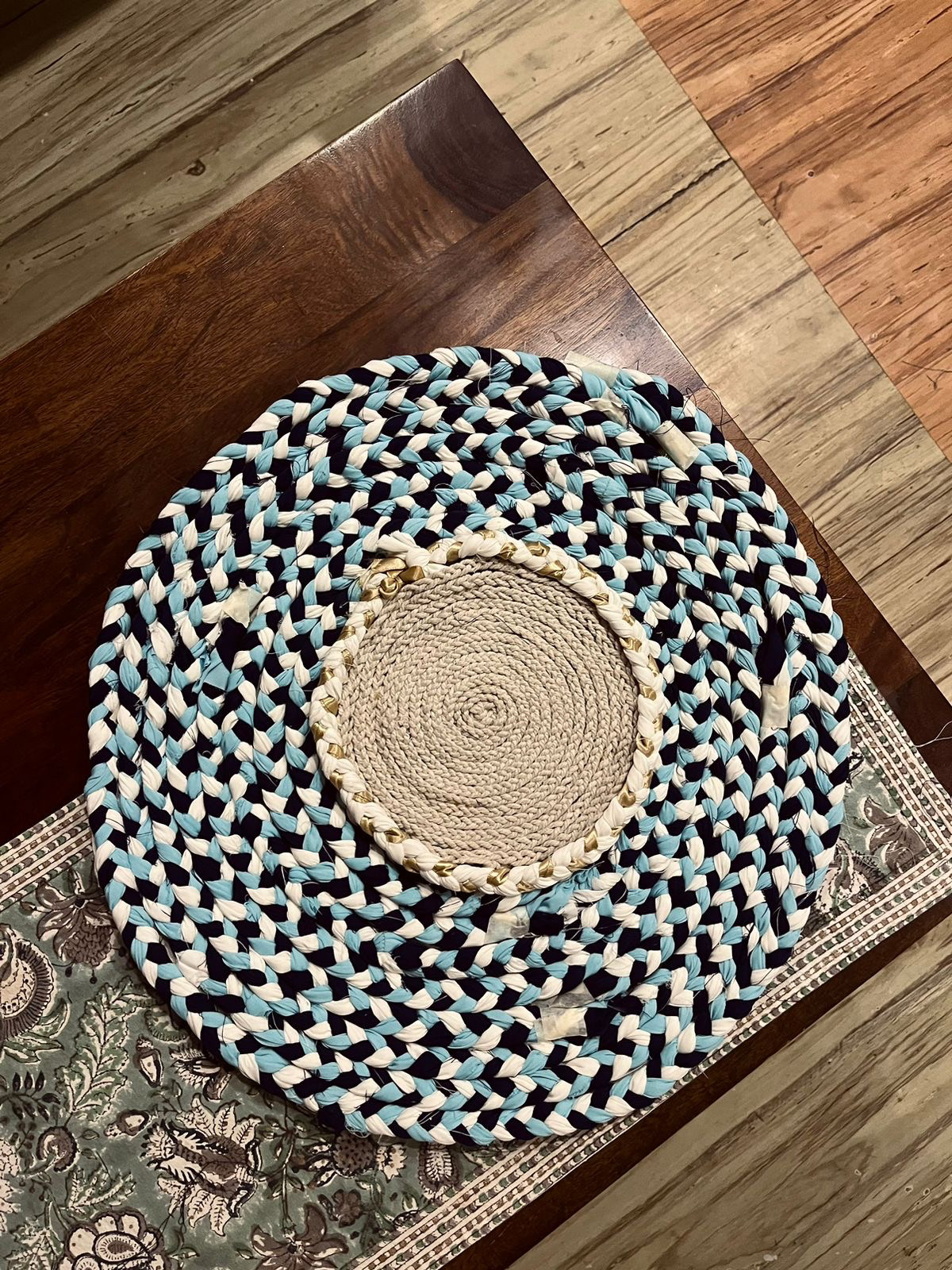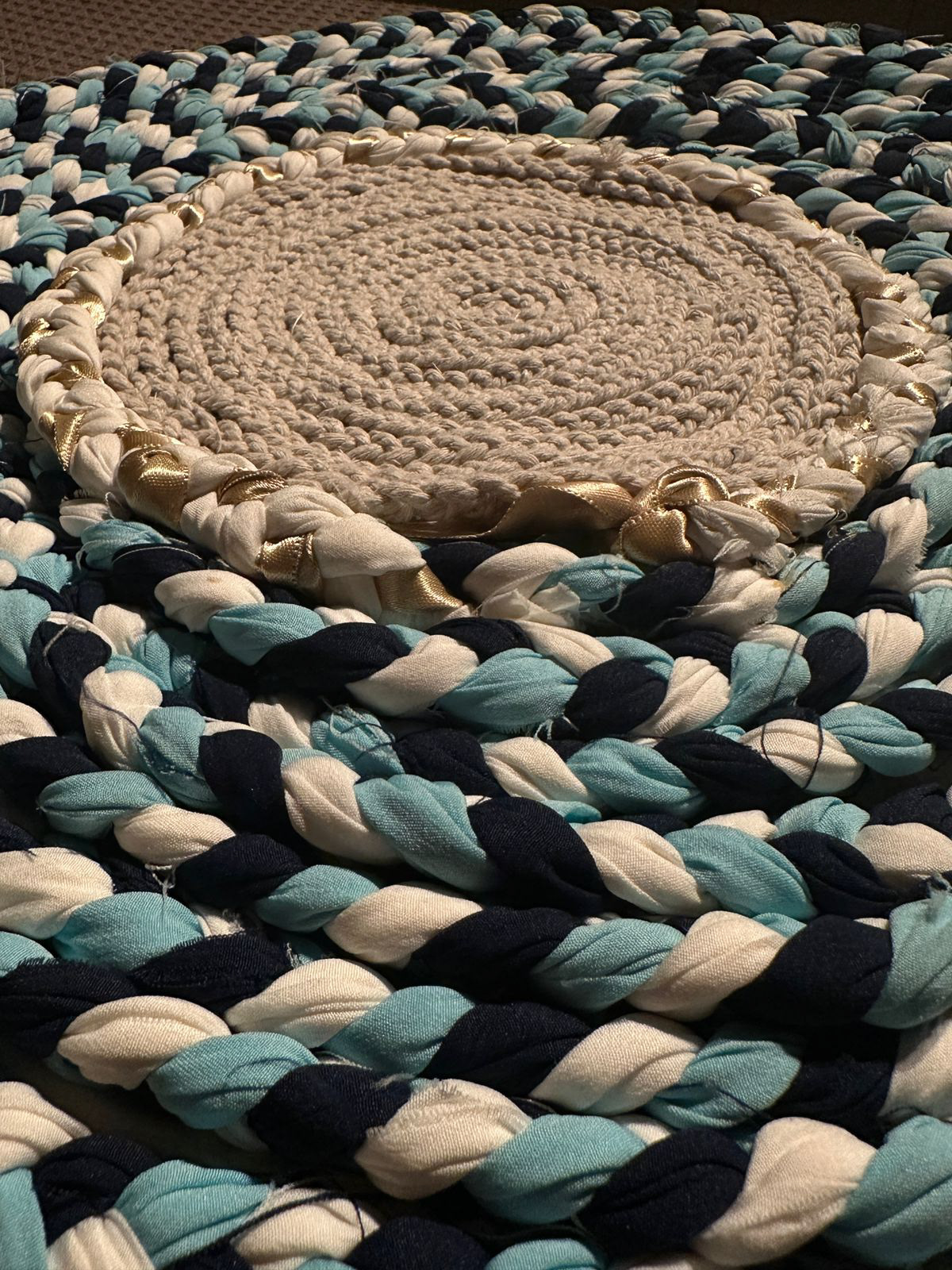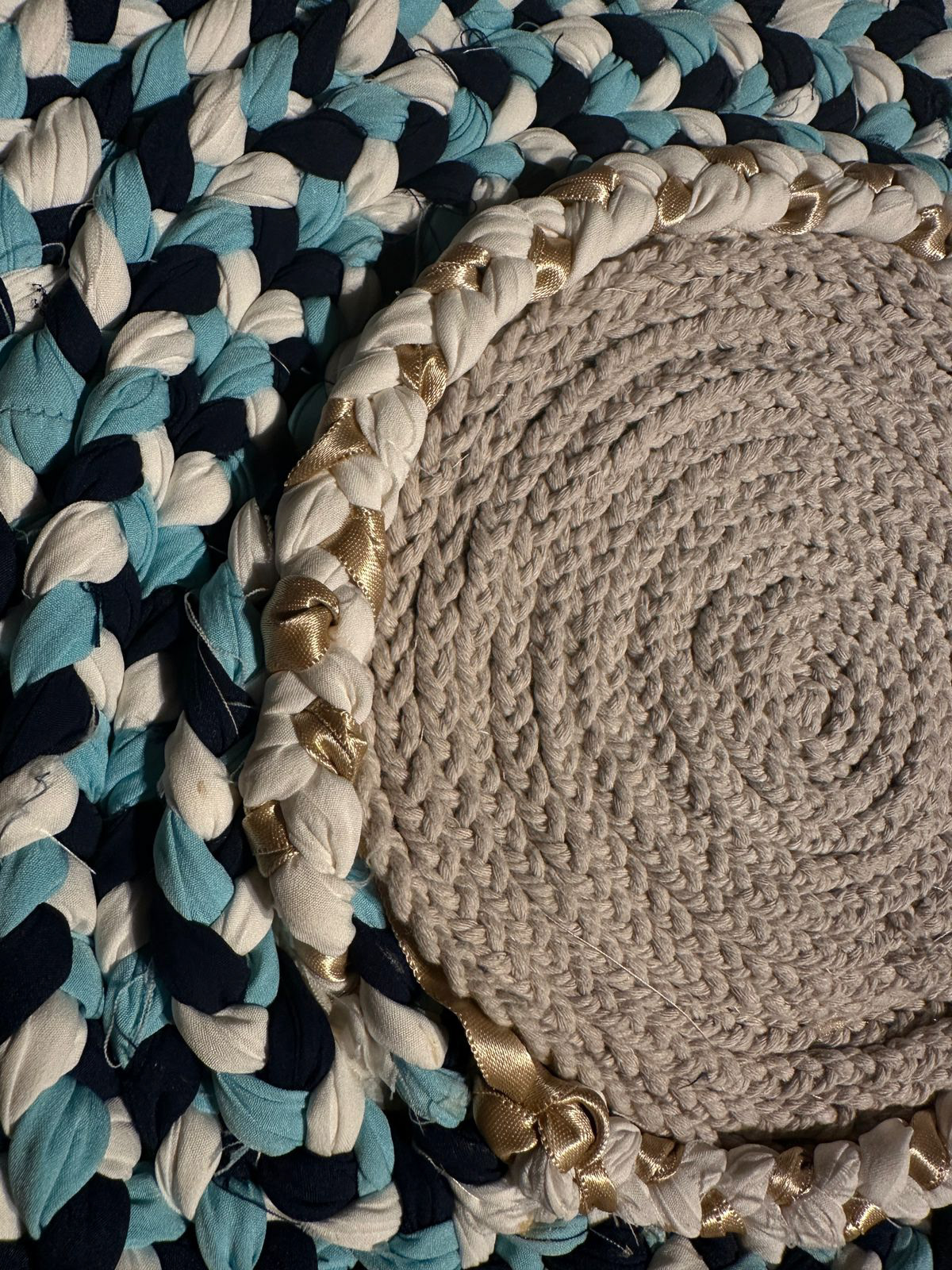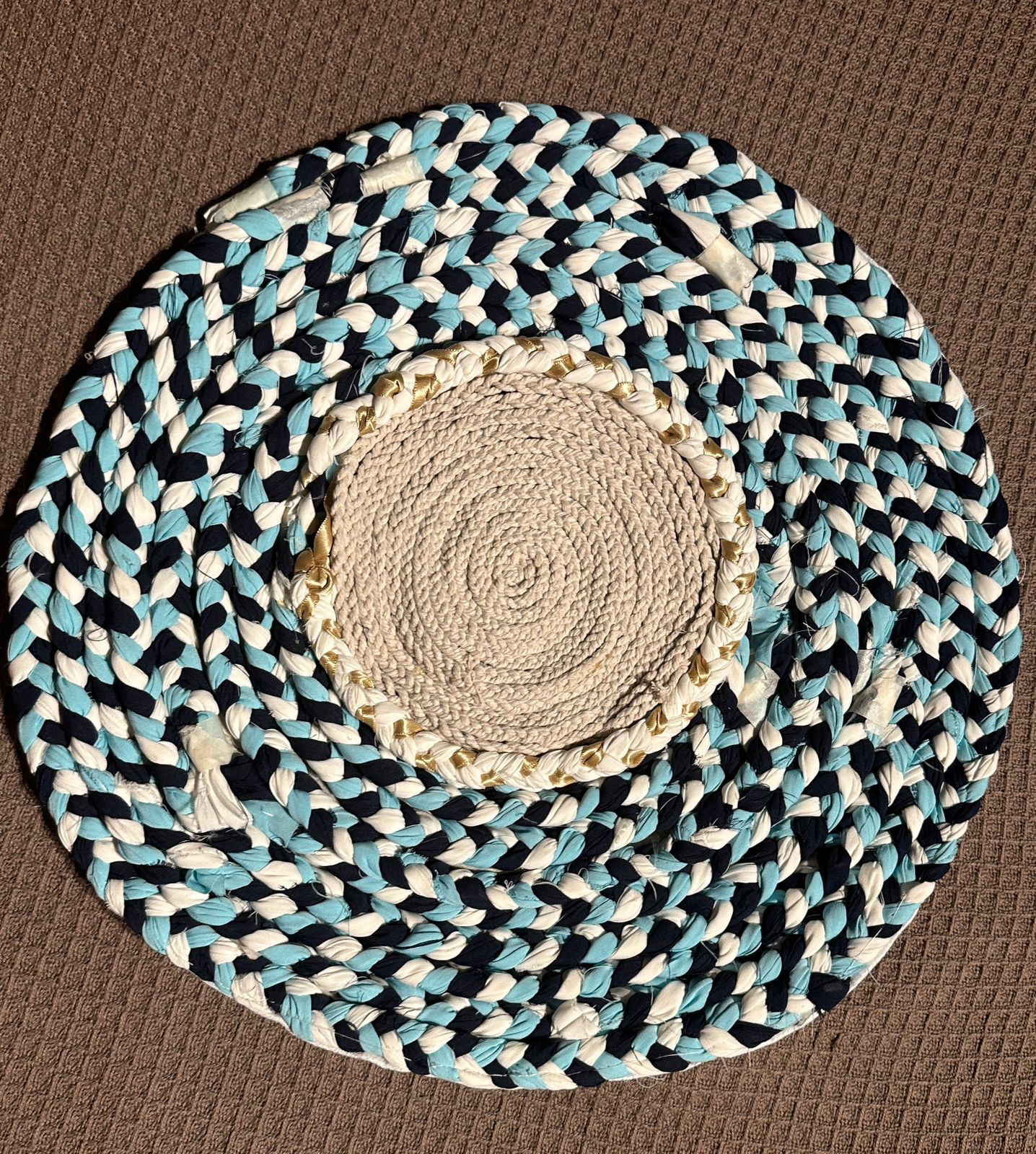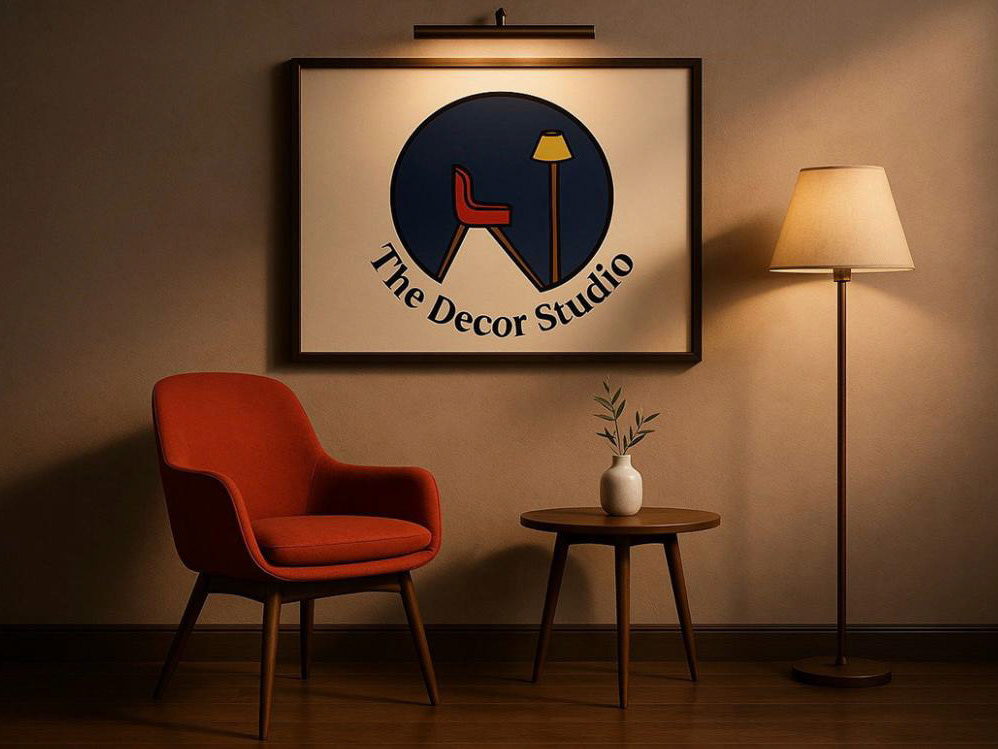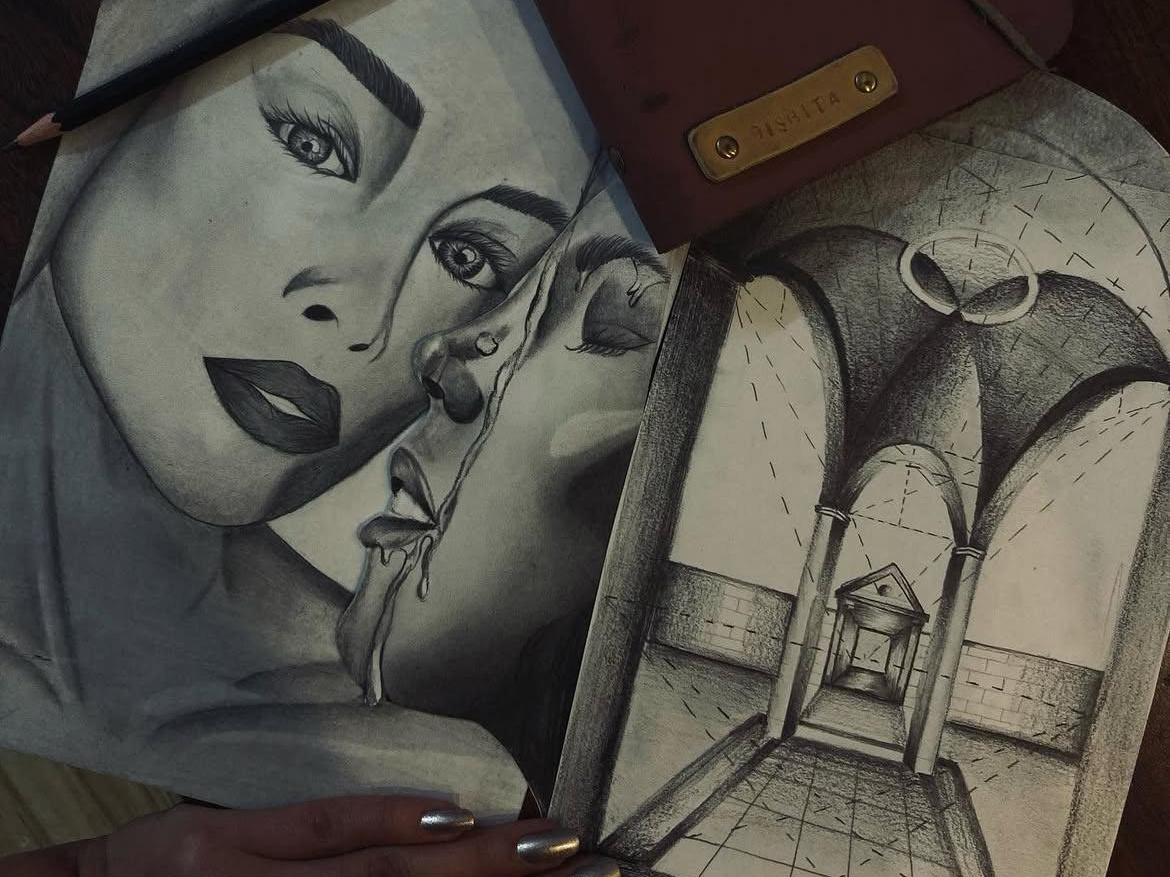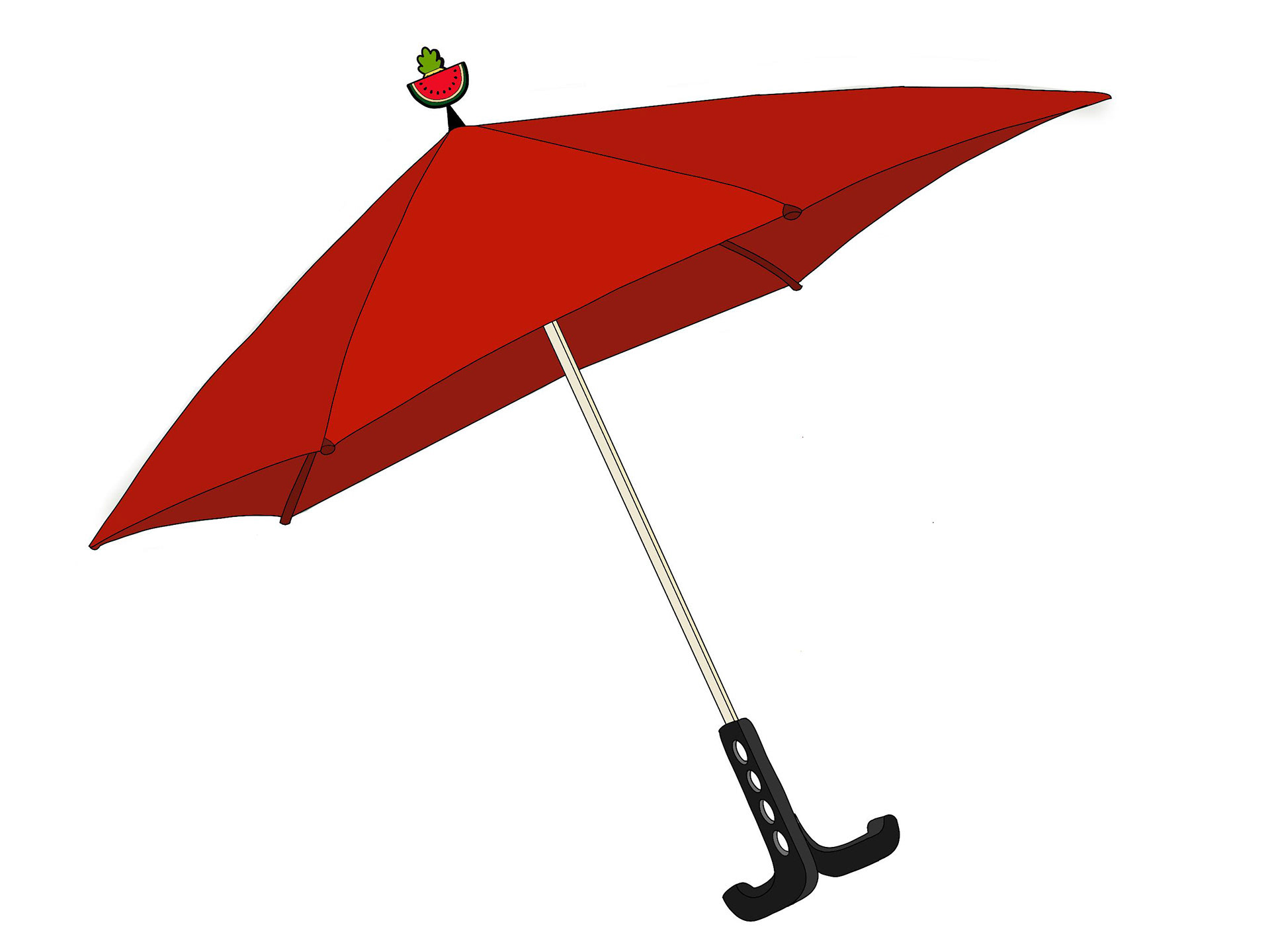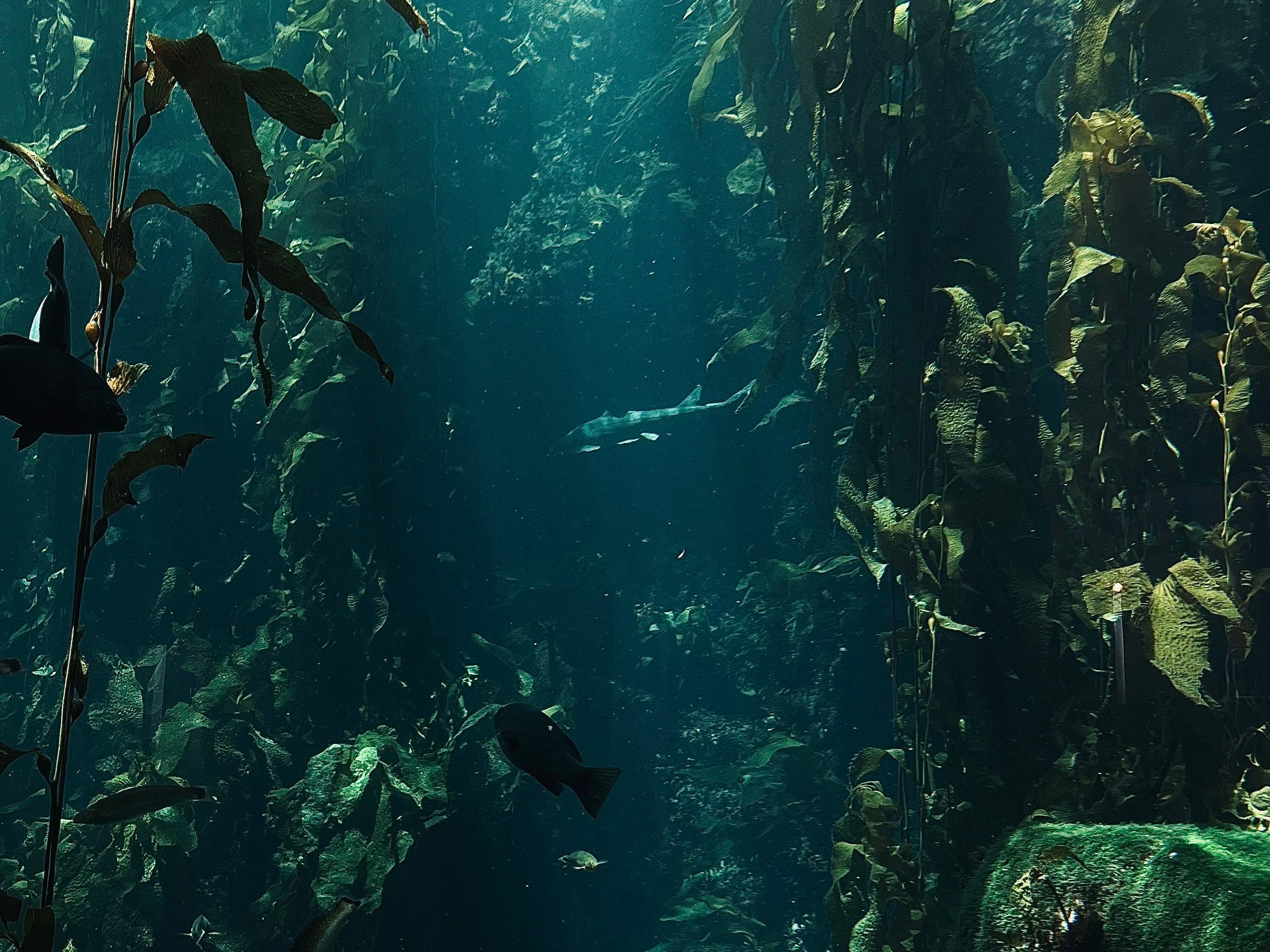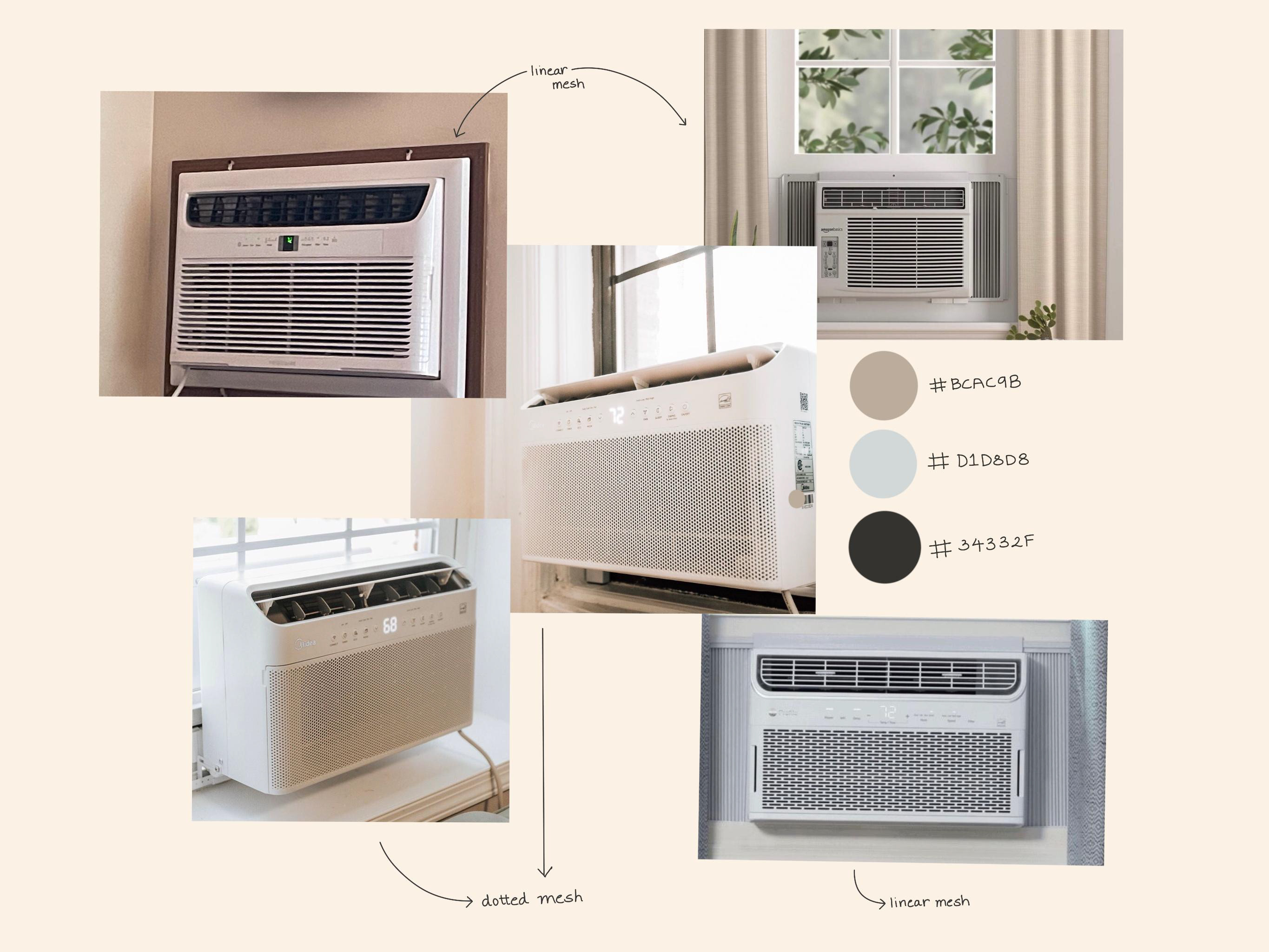1. Sustainability Aspects
• Upcycling Old Fabrics:
The rug is entirely made from reused cotton textiles like t-shirts, bed linens, and fabric scraps.
Prevented fabric waste from going to landfill, reducing environmental impact.
• No New Raw Materials Used:
All materials used were already in existence, making the project resource-efficient.
• Low Energy Footprint:
The construction process was done by hand — no machinery, no electricity.
• Durability:
The tightly braided and stitched construction ensures longevity, reducing the need for frequent replacements.
• End-of-Life Consciousness:
Fully recyclable/disassemblable if ever discarded — no synthetic glues or non-recyclable fillers used.
2. Why a Circular Braided Pattern?
• Symbolism & Philosophy:
The circle represents wholeness, continuity, and sustainability — reflecting the life cycle of materials.
A closed-loop shape metaphorically supports the circular economy model.
• Functional Benefits:
A circular rug lies flatter and distributes tension more evenly than rectangular shapes.
Braided coils create a dense, durable surface ideal for everyday use.
• Craft Heritage:
Inspired by traditional rug-making techniques, giving a nod to cultural craftsmanship while promoting modern sustainability.
3. Color Selection Rationale
• Color Palette:
White, navy blue, sky blue, beige, and hints of gold.
• Meaning:
Blue Tones: Represent calmness, the ocean, and eco-conscious living.
White: Cleanliness, upcycling purity, and simplicity.
Beige Center: A neutral grounding tone, centralizing the visual balance.
Gold Ribbon: A subtle accent that adds richness without overpowering the design — also repurposed.
• Harmony:
The repetition and alternating color pattern create a visual rhythm, enhancing the handmade aesthetic.
4. Techniques Used
• Hand Braiding:
Fabric strips were braided into thick cords by hand.
• Coiling & Stitching:
Braids were spiraled from the center out and hand-stitched to maintain structure and flatness.
• Integration of Ribbon:
Gold ribbon woven between braids to add visual interest and texture contrast.
6. Reflection & Learnings
This project taught me how design and sustainability can co-exist meaningfully.
Working with irregular fabrics improved my problem-solving and planning skills.
The circular rug now serves as a functional art piece, blending ethics, aesthetics, and purpose.
